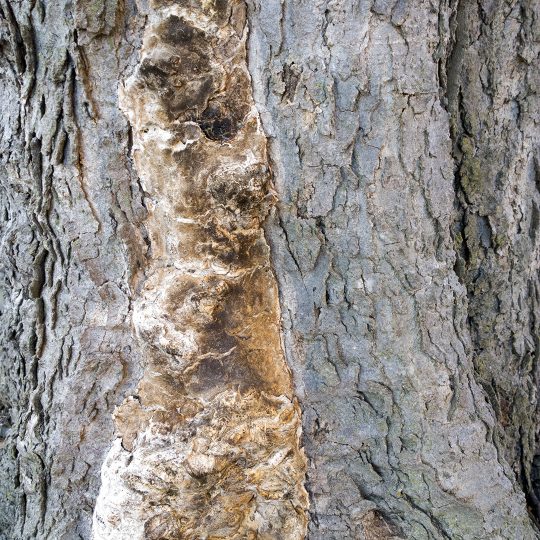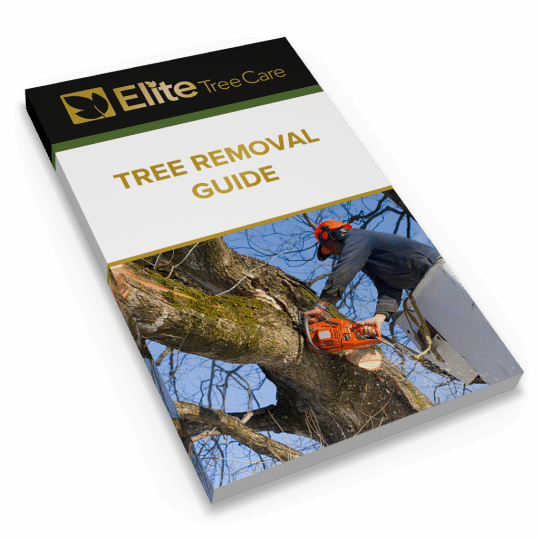Common Tree Disease
For Hardwoods, Conifers, and More
Posted
April 5, 2018

Would you know if your tree was unhealthy? Depending on what type of tree you have, there are ways to tell if it’s be stricken with a common tree disease. With over 30 diseases, there are many things that can cause a decline the tree’s health and possibly lead to its death.
Common Tree Disease for Hardwoods
- Anthracnose and Leaf Spot. The most common sign is dead areas or blotches on the tree leaves. Most of the infected trees include the American sycamore, white oak, black walnut, and dogwood.
- Bacterial Wetwood. You may notice sap seeping from the rotting point. This is the tree trying to rid itself of the disease, which needs a dark, damp environment in summer temperatures.
- Dutch Elm Disease. Affects American and European species of elm. This fungus infection results in clogging of vascular tissues, preventing water from reaching the crown. You’ll see the tree start to wilt before it dies.
- Fire Blight. Affects many apple and pear trees, and caused by a bacteria that can damage many parts of a plant but you’ll notice a change in leaves first.
- Galls on Leaves and Twigs. Bumps or growths caused by feeding insects or mites. It’s most noticeable on the leaf, stem, and twig of an oak tree. Although these galls may look like a serious problem, most are harmless to the overall health of the tree.
- Lucidus Root and Butt Rot. One of the most common root and butt rots of hardwoods. It affects a wide range of trees, including oaks, maples, ash, locust, elm, mimosa, and willows, and is found throughout hardwood forests. A host tree will deteriorate over time and then die.
- Oak Wilt. Affects red and white oaks in the eastern United States. The fungus takes advantage of weak, wounded trees, and can move from tree to tree through roots or insects.
- Verticillium Wilt. Common in many soils and affects a wide variety of herbaceous and woody plant species including ash, maple, redbud, and yellow poplar. This disease can become a serious problem if the soil is infested, but many trees have shown some resistance.
Common Tree Disease for Conifers
- Annosus Root Rot. Occurs over much of the Eastern U.S. and is very common in the South. The fungus infects freshly cut stump surfaces, producing conks that form at the root collar on roots of living or dead trees and on slash..
- Diplodia Blight of Pines. Brown, stunted new shoots with short, brown needles; mostly found in landscape, windbreak, and parks trees.
- Dwarf Mistloe. Infests black spruce in the northern U.S. and lodgepole pine in the Northwest and Rocky Mountains. This damaging disease causes severe growth loss and death.
- Fusiform Rust. A stem infection that can kill a young tree in five years. The fungus attacks the living tissue of pine stems and branches, and in the green leaves of several species of oak tree.
- Littleleaf Disease. Affects shortleaf pine in the Southern United States. Affected trees have reduced growth rates and usually die within six years. The disease is caused by a complex of factors including the fungus, low soil nitrogen, and poor internal soil drainage.
Other Common Tree Disease
- Armillaria Root Rot. Attacks hardwoods and softwoods and kills shrubs and vines in every state. Trees already weakened by competition, pests, or climate factors can quickly die, but this fungi can also infect healthy trees, either killing them outright or welcoming attacks by other fungi or insects.
- Powdery mildew is a common disease that attacks all kinds of trees. A white powdery substance on the leaf surface comes from millions of tiny fungal spores, which are spread in air currents to cause new infections.
- Sooty mold looks just like chimney soot, but it seldom damages the tree. Dark fungi grow on the honeydew excreted by insects, or on material coming from leaves of certain trees.
If there’s a disease listed above that fits your tree’s current condition, contact the tree specialists at Elite Tree Care for ways to bring it back to life.

Download Your FREE Tree Removal Guide
Even dedicated DIYers should think twice before taking on the task of tree removal. Our guide will help you decide whether to hire a tree service and how to get the most value for your money.